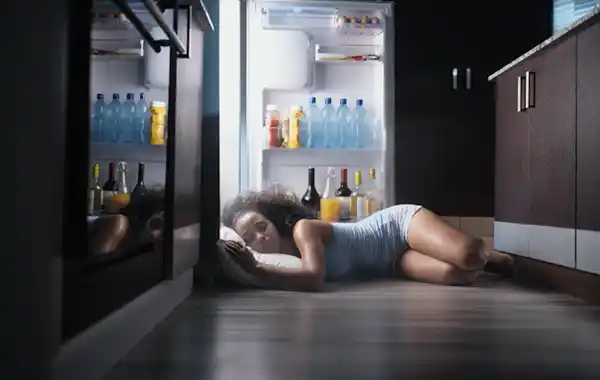03 July 2024
|

Nicola Rivers, indoor climate specialist at Zehnder Group UK, examines the problem of overheating in residential buildings.
CIBSE defines residential overheating according to its fixed temperature test as, ‘when the internal temperature threshold of 26°C is surpassed for over 3% of the time’. Exceeding this temperature threshold for extended periods can affect occupant thermal comfort, health and wellbeing as well as productivity.
Within the UK Building Regulations, Approved Document Part O provides further guidance to building designers on mitigating overheating in residential buildings and reducing the effects. Its prescriptive approach to optimising glazing, solar shading and natural ventilation clearly outlines preferred solutions to keeping a building cool.
But problems occur when external factors dictate that passive ventilation can’t be used to control internal temperatures. For example, if planning dictates that windows cannot be opened, for risk of noise, security or pollution, Part O lists alternative means - from acoustic façade ventilators and mechanical ventilation to mechanical cooling. The predicted effectiveness of these solutions must be modelled in accordance with TM59 to demonstrate compliance with Part O.
Traditional methods of combating overheating often rely on air conditioning units. Roughly 2 billion air conditioning units are now in operation around the world, with 70% of these units being in residential. This excessive demand results in significant implications for electricity grids today and in the future.
Climate change has led to increasing summer temperatures and Met Office future climate projections, under a high emissions scenario, suggest the temperature of hot summer days could increase again by between 3.8 and 6.8ºC in future decades. Our recent summers have already been characterised by extremes in the UK’s climate.
In the summer of 2022, temperature records soared beyond 40ºC for the first time and large parts of the country experienced unprecedented discomfort through overheating, causing many to have to flee their homes in search of cooler and safer dwellings. This means that the use of air conditioners is set to soar even further, putting evermore pressure on global electricity demand.
To remain on track to reach Net Zero targets by 2050, increased adoption of the highest-efficiency technology needs to be firmly integrated into building design from the get-go. Now is the time for a different approach in the UK than always turning to air conditioning.
The importance of indoor air quality
In addition to putting strain on the national grid through the systems' considerable use of energy, air conditioning units also run on planet-harming refrigerant gases that are irreversibly bad for the ozone. The cooling industry accounts for 10% of all global CO2 emissions through the cooling system technologies that we deploy, contributing even further to global warming.
They are also expensive to run, adds another service on top of the standard workings within the building and tend to sit dormant through the winter months when the temperatures fall again.
But most worrying is how air conditioning can have negative effects on a building’s indoor air quality (IAQ). By merely recirculating air, these systems can reintroduce potentially harmful particulates such as dust and allergens, compromising occupants' health and comfort. It’s important to remember that cool air doesn’t mean fresh, clean air.
People wrongly assume that the air inside a building is clean and safe but indoor air is typically two to five times more polluted than outdoor air due to airborne chemicals and particulate matter. Without effective ventilation, stale air containing harmful gases and particles can become trapped polluting the air.
Combining ventilation with active cooling however, not only provides cooling in the hotter months, while supplying clean and fresh, filtered air into the property but also can be used to warm the air in colder months adding to greater energy efficiency. One system, that works all year round to provide an optimal and comfortable indoor climate.
Using ventilation as a strategy and solution to mitigate overheating
Mechanical ventilation with a tempered air system can offer a better solution to overheating issues in residential properties and can be designed in conjunction with dynamic thermal modelling.
These systems can significantly reduce cooling requirements, as demonstrated by a recent study implementing the Passive House standard in Tall Residential Buildings, which saw a reduction of up to 40% in cooling needs due to improved enclosure performance.
Mechanical ventilation systems, such as Mechanical Ventilation with Heat Recovery (MVHR), often serve as the foundation for addressing overheating concerns as they are adaptable to ensure compliance with best practice guidance like CIBSE TM59. However, our approach extends beyond mere ventilation and cooling; it involves optimising the overall indoor climate to create a comfortable and healthy living environment throughout the year.
Adopting a comprehensive hierarchy of ventilation and cooling solutions, Zehnder offers a variety of standalone options as well as integrated ones to ensure the ideal solution is specified for buildings at risk from overheating.
These include various solutions, such as purge ventilation which utilises acoustically treated inline extractor fans, radial ducting to minimise noise and leakage, and pre-insulated ductwork ensuring continuous insulation. Additionally, chilled water coils which also work in conjunction with the MVHR system when linked to a centralised chilled system or reversible heat pump, can provide pre-heating in the winter and pre-cooling in the summer on the supply/intake air.
Our flagship solution, the Zehnder ComfoAir Q600 with ComfoClime, addresses overheating using tempered-air technology, making it perfect for new builds contending with environmental obstacles such as noise pollution or lack of shade. Zehnder introduced this approach to cooling over 15 years ago and continues to evolve and develop the product to tackle residential overheating.
The system integrates heating, cooling, and ventilation functionalities, adhering to Part O/TM59 standards across a range of settings, from residential to care homes. Its innovative features, notably a reversible heat pump module, guarantee energy-efficient performance throughout the year – and its use of the lower GWP refrigerant R32 within an efficient, sealed cycle minimises environmental impact that will remain compliant after 2025.
So, as temperatures soar and buildings become tighter and taller, in line with efficiency and sustainability goals, the need to address the risks of overheating is more important than ever before. Taking control and understanding the best way to mitigate these issues is the first step in an effective overheating strategy.
Right now, over 4 million homes in England report problems with overheating, and more new builds are set to face these same issues as the call for energy efficiency increases. Building designers need to consider the impact of overheating from initial design stage – designing for the future climate predictions and safeguarding residents against the dangers of forthcoming heatwaves.








